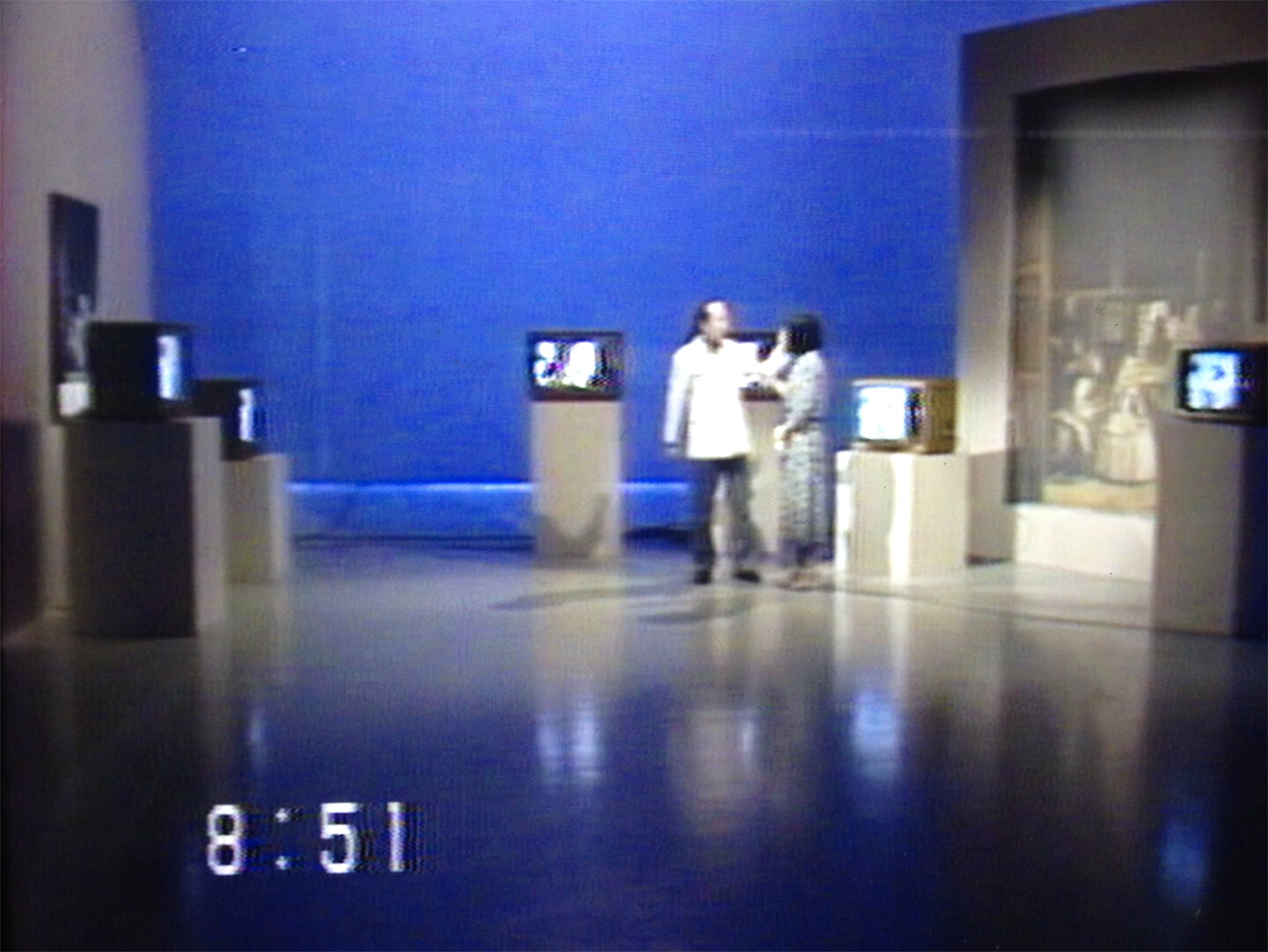December 27, 2020–March 21, 2021
-1F Sunken Garden
Lane 9, Qufu Road
Shanghai
China
Exhibition Curator: Kim Machan, director of MAAP Media Art Asia Pacific
Artists: Katsuhiro Yamaguchi, Nam June Paik, Yoko Ono, Keigo Yamamoto, Kim Kulim, Takahiko Iimura, Shigeko Kubota, Park Hyunki, Soungui Kim, Wang Gongxin, Ellen Pau, Chen Shaoxiong, Geng Jianyi, Zhu Jia, Yuan Goang-Ming
OCAT Shanghai is pleased to present Refocusing on the Medium: The Rise of East Asia Video Art, the first exhibition to assemble key protagonists that initiated experiments with the medium of video originating from Japan, Korea, and China, on view from December 27, 2020 to March 21, 2021. The exhibition proposes a re-examination of the artists’ approach to the video medium rising from East Asia and contributes to the global history of video art as a transnational contemporary art medium.
Since the SONY Portapak portable video recorder was invented in Japan in 1965, artists on every continent gained access and have contributed to the development of this global medium. Exhibitions exploring the histories of video art have featured across Asia in the past decade. The cumulative results have enhanced detail and depth to specific national histories laudably expanding an existing world history of video art. The exhibitions and accompanying research expose scholarly accounts of experimental practice and international exchange that provokes a more radical review of the way video art is considered.
This exhibition shows how the rise of East Asia video art developed as a hybrid global aesthetic characterized by conditions of video art’s medium specificity in a context of post medium contemporary art practice. As a new technology and experimental artistic medium with distinct characteristics, video art arrived with no cultural traditions, no significant conventions, or history—a new global contemporary art tool.
This view of the medium gives reason for a recalibration of thinking and reassessment of the contribution that artists from East Asia have made to this still contested history. How did artists in East Asia take up the apparatus of video and experiment with this new global medium and can this change the way we might approach the history of video art?
Beginning with Nam June Paik’s entangled Korea, Japan, European and American global art networks, artists from East Asia took up the culturally non-specific medium to enter new points of exchange and equally complex trans-regional and transnational networks. In little more than 20 years, the video medium was channeled by artists globally, specifically in Japan from 1968, Korea 1978, Taiwan 1983, Hong Kong 1985, and the mainland of China in 1988. Within a brief period, first-hand experimentation was occurring across the industrialised and developing economies straddling continents and cultures, situating video art as the first global contemporary art medium.
In partnership with the Nam June Paik Art Center in Korea, a live stream broadcast of the iconic Nam June Paik video installation TV Buddha, (1974-2002) is projected in the entry foyer of the exhibition. The projection is a provocation to question the video medium within the context of the exhibition—the liveness of the medium, the distortion of time and space, the tension between illusion, reality and authentic experience, the conceptual strategies that subvert the medium, and the dynamics connecting local and global aspirations. Rarely seen outside of Japan, Katsuhiro Yamaguchi’s CCTV interactive video installations dating from 1972 evidence his active contribution to emerging international contemporary art dialogues. In this exhibition, Las Meninas (1974-75) that was presented at the 13th San Paolo Biennial in 1975, offers a firsthand experience of the complex art experiment incorporating CCTV, six video monitors, and two full-size reproductions of the eponymous 17th-century painting by Diego Velázquez making actual Michel Foucault’s analysis of the painting in his book The Order of Things (1966).
25 key installations are presented highlighting East Asia artists’ exemplary investigations and contribution to the new hybrid global aesthetic of video art.
Public Programs at OCAT Shanghai Auditorium will be presented throughout the exhibition including the Opening Forum with Zhang Peili, Wang Gongxin, Zhu Jia, Dong Bingfeng, Kim Machan moderated by Tao Hanchen.
In Conversation with Dong Bingfeng and Sing Song-Yong
Date: Saturday, January 21, 2021
Shanghai Time: 2-4pm
Dong Bingfeng Researcher of the School of Intermedia Art of China Academy of Art, Hangzhou, and former academic director of Beijing OCAT Research Center will join in a conversation with Taipei-based academic and curator Sing Song-Yong. In 2015 Sing with co-curator Wang Po-Wei researched and produced Rewind_ Video Art in Taiwan 1983-1999 a history of video art in Taiwan. The discussion will be presented to a live audience in OCAT Shanghai and available online.
In Conversation with Barbara London and Kim Machan
Date: Saturday, January 31, 2021
Shanghai Time: 9-11am
Barbara London, curator, art historian, and author of Video Art, the First Fifty Years (Phaidon 2020) joins in conversation with Kim Machan, curator of Refocusing on the medium: the rise of East Asia Video Art. Barbara London will reflect on the exhibition and her engagement with the artists contributing to the emerging field of video art, in and from the East Asia region, while bringing works into a New York and international context. The discussion will be presented to a live audience in OCAT Shanghai and available online.
For streaming information search bilibili @OCAT and www.maap.org.au


